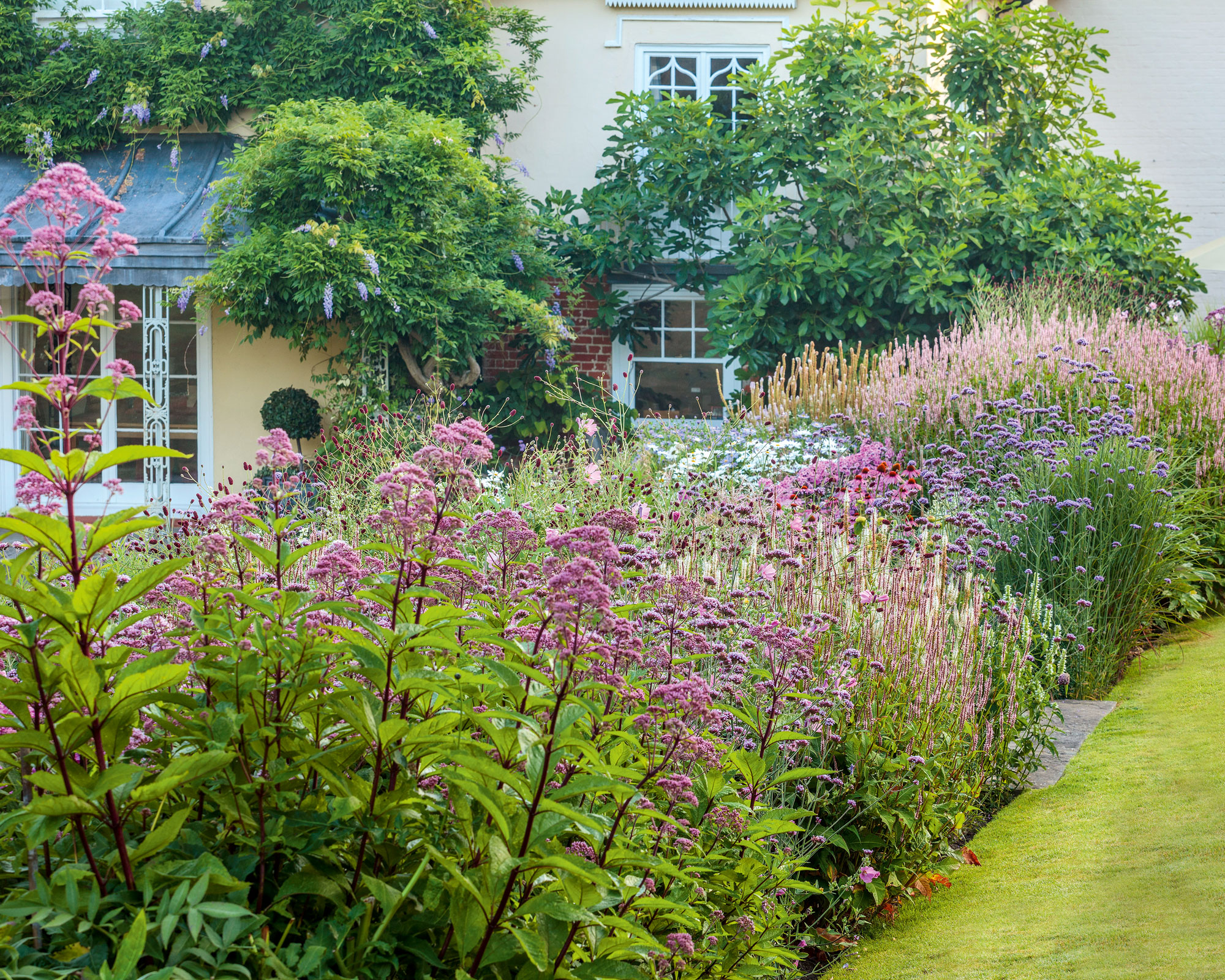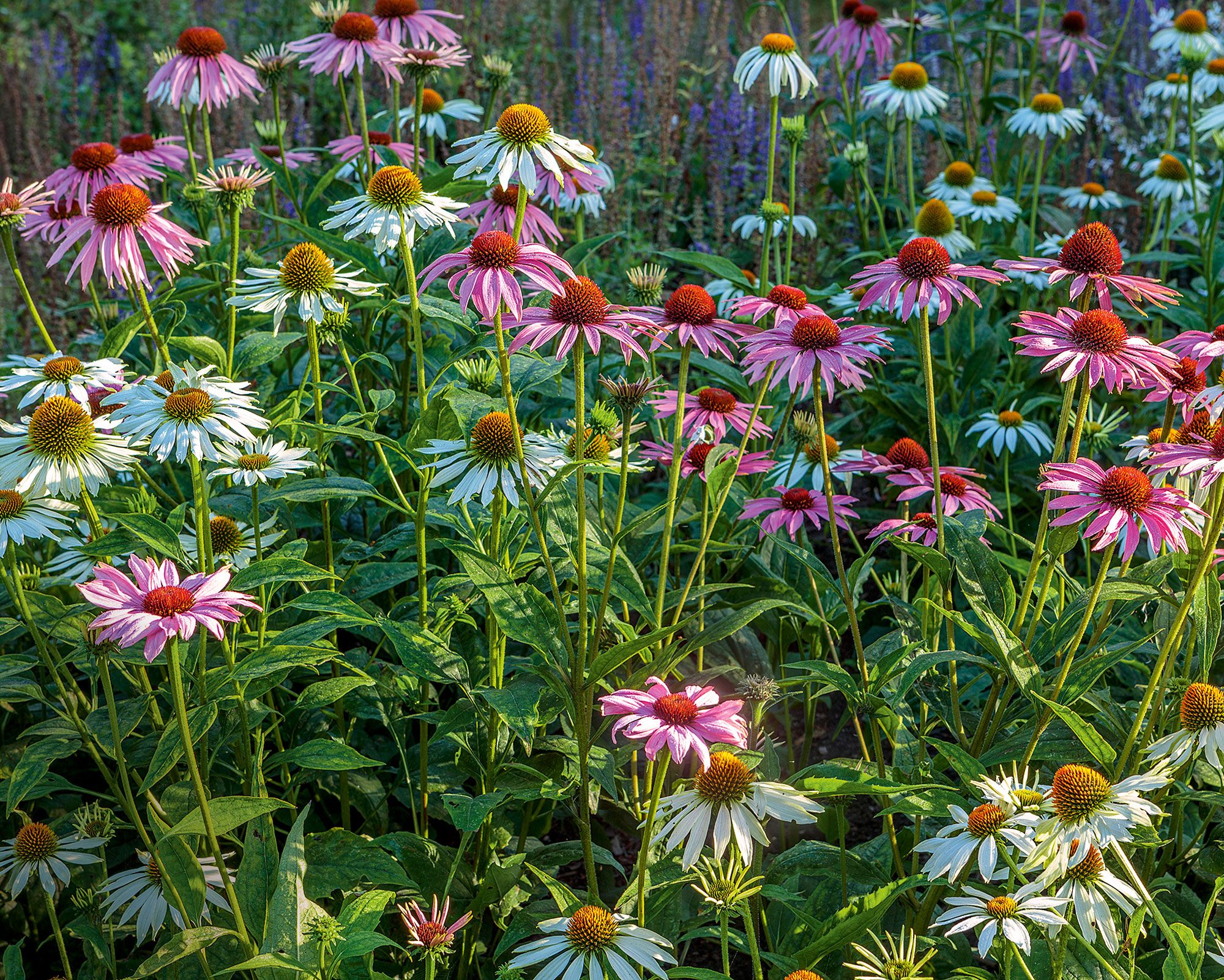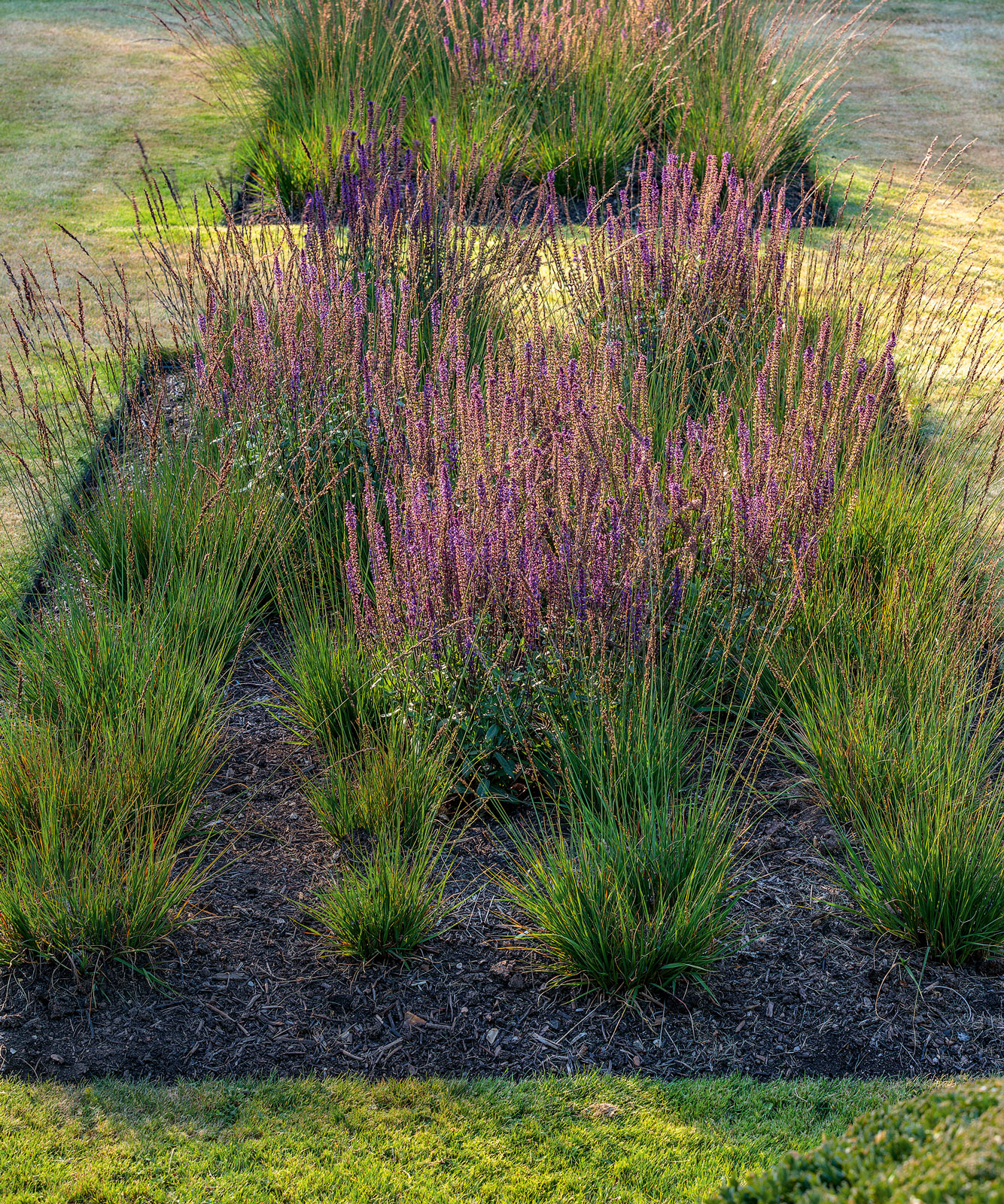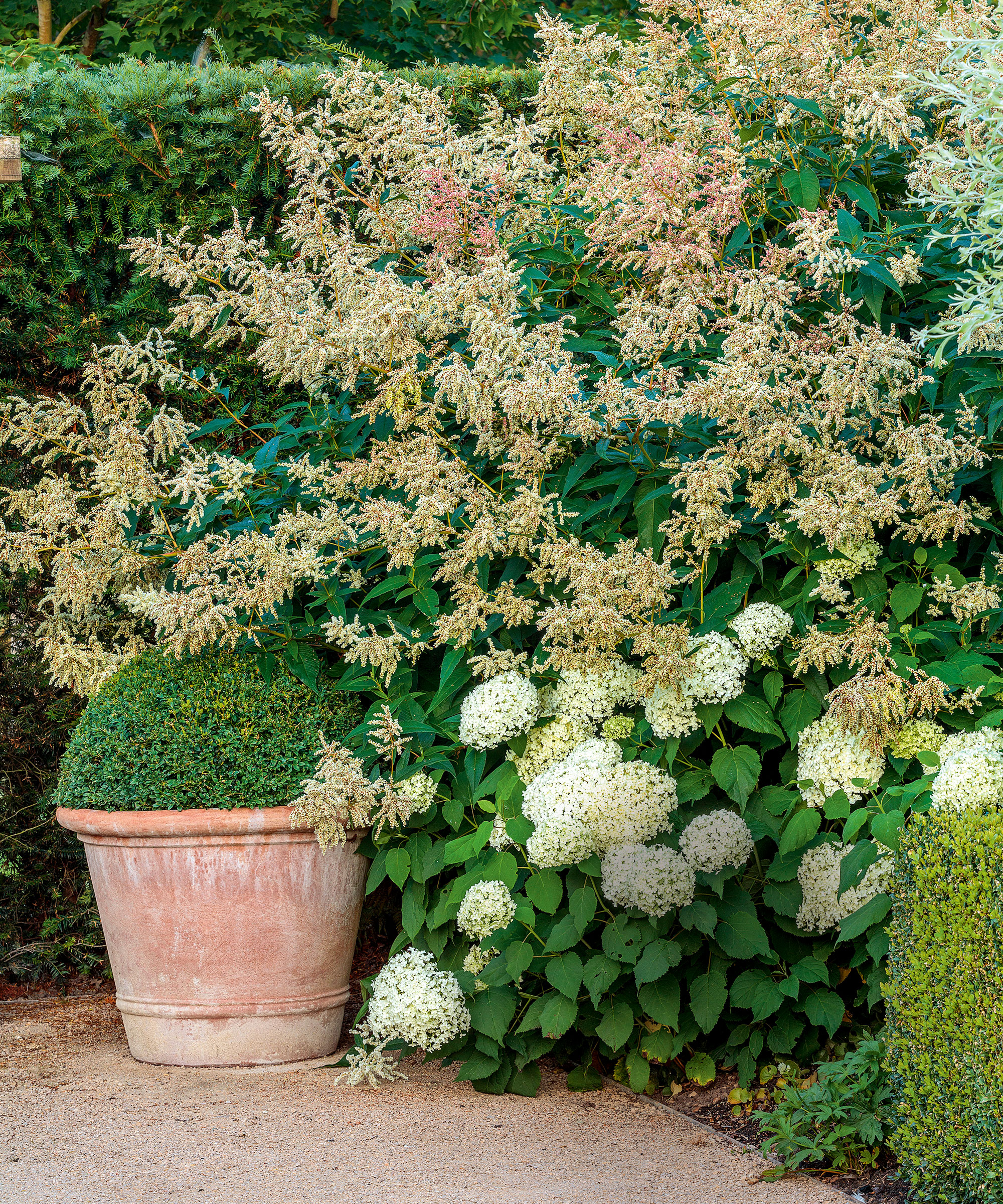5 clever design tricks to steal from this large English garden
Designer Jeremy Allen shares his tips for bold garden structure reinforced by select mass and repeat plantings from his own majestic plot


‘This is Constable Country,’ Jeremy Allen says of the landscape surrounding his UK home on the Suffolk/Essex borders in southern England. The Old Vicarage Wormingford nestles in a picture-perfect ‘classic verdant dell’. Jeremy has imprinted a series of breathtaking gardens at its heart, fringed by magnificent indigenous trees.
Jeremy’s bold garden structure designs follow the premise that ‘simplicity with good structure and repetition are key’ – this are garden ideas anyone creating a new garden landscape from scratch will want to use.
Jeremy honed these skills during an intensive year at Inchbald School of Design. ‘I’ve never worked so hard – I really loved it,’ he says. His enthusiasm positively confirms the decision to ‘cease with the city’, and carve out a business Jeremy Allen Garden Design.
Below, he shares his tips on how to go bold with structure.
1. Split a large garden into 'rooms'

The 12-acre plot encircling the vicarage was no blank canvas when Jeremy arrived. ‘I cannot exaggerate the overgrown and neglected state of the grounds – nature had truly taken over,’ says Jeremy, who removed over 200 elders and sycamores leaving a framework of splendid native trees, meadows and a three- to four-acre space.
These big spaces called for definite layout – and knowing how to plan a garden was key to success. He set out a series of rooms and spaces: mixed grass and herbaceous borders, a prairie meadow, rill garden, reflecting pool, ‘natural’ pond and a 60-meter box cloud hedge. Each ‘room’ has a firm and definite handwriting, yet, there is clear and unifying connectivity.

The front lawn borders face south-west and the encircling gardens receive varying degrees of sunshine according to aspect and shading by trees and tall hedges. ‘Bold structure is enhanced by more delicate, wilder areas. creativity is essential to balance the aesthetics of both,’ Jeremy says.
Design expertise in your inbox – from inspiring decorating ideas and beautiful celebrity homes to practical gardening advice and shopping round-ups.
2. Create mixed grass and herbaceous beds

His interpretation of English garden ideas and, in particular, a ‘classic English summer border’ embraces a tumultuous mix of architectural grasses with herbaceous perennials. This fusion of antiqued-colors and touch-me texture is achieved by abundant, mass planting of repeated key perennials, such as geraniums, salvias, echinacea, veronicastrum, knautia, Verbena bonariensis, phlox and sedum, which unite to create an immense ‘wall’ of flowers. You’ll need free-draining soil in full sun to get this effect.

3. Choose the right plants

For anyone considering flower bed ideas, Jeremy's advice is to choose few but many plants and restrict your palette. Plant tightly, 12in apart, to create a herbaceous perennial bed that naturally suppresses weeds.
Select structural ornamental grasses that bring diversity of architecture, height, tone and texture; tall, airy Calamagrostis x acutiflora ‘Karl Foerster’, voluminous, mid-height Pennisetum villosum, shaggy tufted golden oats. Plant in threes at repeat intervals along the bed. Generally, plant tall at the back, shorter at the front, but break the rule where it feels right.
Then comes secondary plantings: to add interest interplant flowering plants in bold blocks or drifts, seven to 11 of each, color-themed (blue and yellow). Blues: Iris ‘Sable’, Lavandula angustifolia ‘Hidcote’. Yellows: Kniphofia ‘Percy’s Pride’, Spiraea japonica ‘Goldflame’. Book-end with contrasting, naturally domed, defined, evergreen Hebe rakaiensis.
Finally, underplant with bulbs to create spring interest when grasses are cut back to make way for new growth.
4. Use repetition

Irregular repetition reinforces structure and cohesion while simultaneously creating movement and flow. Jeremy extended the existing hedge with box from elsewhere in the garden and cuttings to create the 60 meter cloud hedge above the lawn. He was clever with garden edging ideas.
On a steepish incline, east of the house, a 50/50 mix of grasses and new perennials swarm more freely, reminiscent of a prairie meadow. Based on a paisley textile design, seven curvaceous islands, afloat with grasses and flowers, seem as one. Jeremy combines a range of grasses, tall Calamagrostis x acutiflora ‘Karl Foerster’, Stipa gigantea and shorter Hakonechloa macra, with an array of richly colored, summer-flowering perennials, including echinacea, salvia, perovskia, gaura, actaea and persicaria.
5. Keep it simple

Jeremy’s bold designs can also be ingeniously simple. ‘The difficulty in design is sometimes learning what to leave out,’ he says. The rill garden, secreted beyond the main lawn, exemplifies the power of restraint and the impact of repetition.
Definitive, geometric hard-landscaping is echoed in the structural planting; clipped, shaven and sharpened yew hedging, box tablets and sculpted spheres of Pyrus salicifolia. ‘Piet Oudulf said, “Worry about structure first, color is secondary”,’ says Jeremy.

This green architecture is simply embellished with a handful of foliage-interest plants, which underpin a foam of white summer flowers. The mirror-image beds reflect in the still waters of the central canal, simply reinforcing this well thought-out design.

The component parts of the garden are exciting and diverse, but are unified by the creator’s absolute hallmark and design method. ‘You need strong, definite structure and layout and to plant abundantly against that to produce a really good result.’
Words / Jacky Hobbs
With over 30 years of working in journalism on women's home and lifestyle media brands, Rhoda is an Editorial Director, Homes Content, at Future. Over time, Rhoda has worked on the entire homes and gardens portfolio including Homes & Gardens, Country Homes & Interiors, Livingetc, Ideal Home, Style at Home, Woman & Home, 25 Beautiful Homes, Amateur Gardening and Easy Gardens. She was also editor of Country Homes & Interiors for 14 years, leading it across print and creating the blog Country Days. She has also worked at Woman’s Weekly, Family Circle and Practical Parenting.
